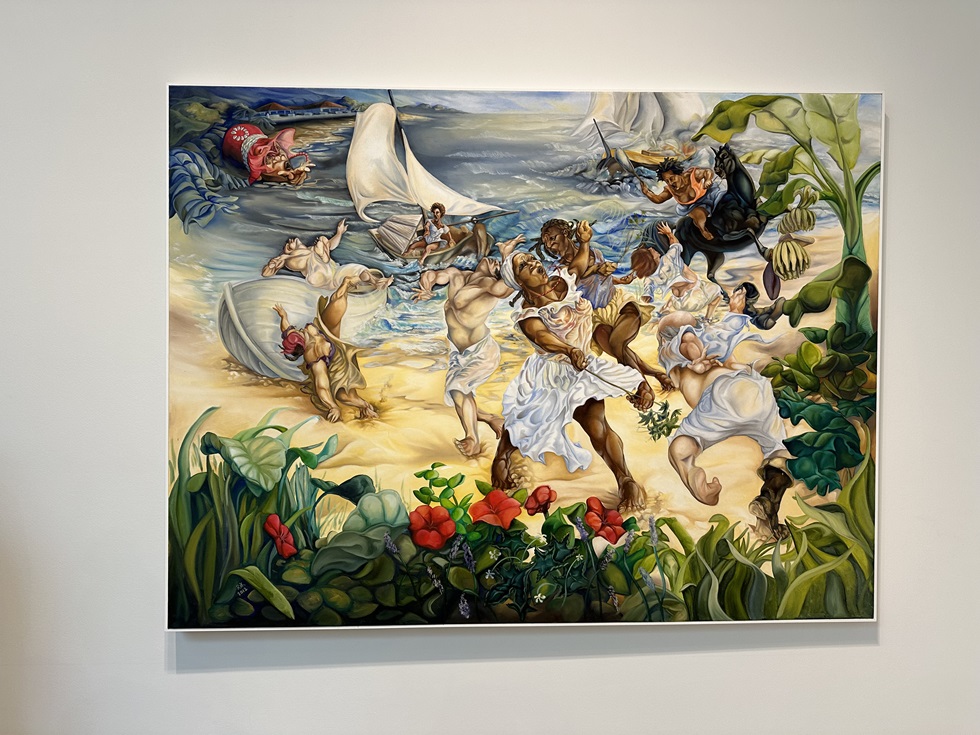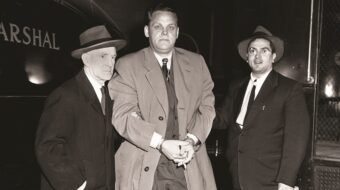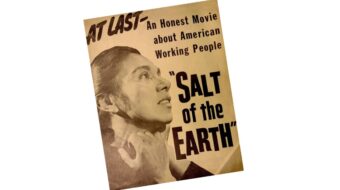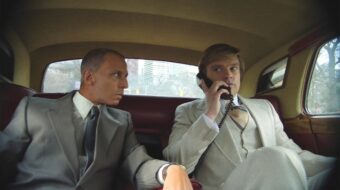
LOS ANGELES—Artist residencies are an important resource for artists to explore site-oriented practices and experience firsthand particular places and cultures.
Bahia Reverb: Artists and Place presents the work of ten contemporary artists: Sandra Brewster, Gerald Cyrus, Rik Freeman, Juan Erman Gonzalez, Mark Steven Greenfield, Karen Hampton, Germaine Ingram, Francis Tre Lawrence, Precious Lovell, and Tim Whiten. All from North America and of African descent, they were fellows at the Sacatar Institute, located on Itaparica Island across from Salvador, capital of the state of Bahia in northeast Brazil. Bahia was the first point of entry of enslaved Africans into the Americas and remains the center of Afro-Brazilian culture to this day.
Focusing on each artist’s process, the exhibition features artworks in a range of media initiated either before, during, or after the artists’ residencies at Sacatar, reflecting on how these experiences shaped their visions and impacted their practice as they engaged in myriad ways with the richness and cultural power of Bahia. For some artists, their time in Bahia represented an encounter with their Black ancestors and African roots. Others found home and a feeling of belonging, or an unknown or forgotten spiritual part of themselves.
Though the artists’ backgrounds and approaches vary, many overlapping concepts and narratives reappear throughout the exhibition. Collectively the artworks illustrate questions of Afro-Brazilian histories and respond to the legacies of African colonialism and diaspora, dealing with issues of displacement, forced migration, environmental justice, and inequality. At the same time they celebrate cultural traditions, faith, spirituality, and the accomplishments of a common African lineage, highlighting personal, forgotten, marginalized, or discarded histories. Through storytelling, mythology, and memory, the artists play with notions of fact and fiction, the familiar and the unknown, the visible and invisible, questioning how history is told, who claims the authority to tell it, and how it endures over time.
The exhibition represents the myriad forms of resistance a people will engage in under conditions of enslavement and repression.
Bahia Reverb: Artists and Place is organized by the California African American Museum (CAAM) and Art + Practice (A+P). The exhibition is curated by Bia Gayotto, independent curator, artist, and writer. CAAM at A+P is a five-year collaboration. Bahia Reverb is on display through the rest of Black History Month until March 2.
Just to mention a few highlights that stood out on a recent visit, Rik Freeman’s monumental oil painting A Liberdade de Maria Felipa, dating from 2012, is based on the local Bahian narrative of Maria Felipa de Oliveira, an enslaved woman who in 1823 led a group of forty women in a revolt against the Portuguese Navy on Itaparica Island. Freeman recalls this episode: “These women lured the sailors in using their feminine wiles, and when the boys got a little hot ’n’ bothered…the women took out a cansanção bush, which has a multitude of needles that break off into the skin, and immediately infect it. Without mercy nor care, they beat these sailors into submission, then proceeded into the bay and set afire numerous ships.” The Portuguese were then forced to abandon the Island of Itaparica and return to Salvador.
The Athens, Ga.-born artist has a profound fascination with the African diaspora in the Americas, and his work incorporates shared histories between Afro-Brazilian and African-American peoples.

Precious Lovell, born in Pilot Mountain, N.C., began a mixed media project in 2009 celebrating Warrior Women of the African Diaspora, using hand-stitched garment materials and processes that incorporate both personal and universal narratives. These are “war shirts” honoring the histories women made in such diverse places of the African diaspora as the Virgin Islands, Brazil, United States, Ghana, Cuba, Angola, Jamaica and Kenya. During her residency at the Sacatar Institute, she made a war shirt to honor Maria Felipa de Oliveira. Lovell liked to collaborate with local artisans, which allowed her to familiarize herself with cloth makers and local textile traditions. She employs lace, embroidery, fabric painting, dyeing, screen printing, fabric burning, knotting, crocheting, braiding, quilting, appliqué, assemblage and patchwork among other techniques.
Others of her subjects include Harriet Tubman, runaway women from Wake County, N.C., King Peggy of Ghana (the first living woman in Lovell’s series), Dr. Wangari Matthau of Kenya, the first African woman to be honored with the Nobel Peace Prize (2004), and the Negro Washerwoman of the United States. This latter shirt “honors the Black washerwomen of the Jim Crow era who, through their work as laundresses, were able to elevate the status of their family and community through education, homeownership, and business investments. An apron and three head scarves are repurposed into a cape to evoke a superheroine in celebration of these unsung women.”

Karen Hampton’s three wall hangings are imposing, totemic statements. Quest for Angels is made with raffia, a type of cloth woven from palm tree leaves and associated with African traditions. This piece invokes her grandmother, who taught her the craft of stitching. Looking for God, also on raffia, uses brown pigment extracted from rocks that she found during a trip to the high desert in northern Nevada. This area is home to the oldest recorded rock carving, or petroglyph, in North America, dating at least 10,000 years old. And in Shape Shifter, Hampton pays tribute to the Yoruba tradition, where eguns are the spirits of one’s departed ancestors, representing a link between the living and the dead. Hampton found the West African cloth she used to make this series in Salvador’s central market, her choice of material itself demonstrating the continuity of culture, lineage and transformation from Africa to Bahia to the U.S.

The well-known L.A. artist Mark Stephen Greenfield created a series of paintings that pay homage to martyrs and mythical figures from Afro-Brazilian history, symbols of Black pride and heroic resistance. Influenced by his Catholic upbringing, he employs gold leaf, haloes, and iconographic symbols used in western Byzantine religious art, appropriating these materials and traditions to honor and immortalize his subjects. The five works on display portray Zumbi, last king of the escaped slaves’ colony of Palmares; Rosa Maria Egipcíaca da Vera Cruz, a learned mystic of the colonial period little known until a revelatory biography of her by Luis Mott appeared in 1993; Xica da Silva, a rare woman born enslaved who rose to the top ranks of society and was ultimately buried in a cemetery reserved for the white colonial elite; Iyá Nassô, known in Brazil as Francisca da Silva, founder of an Afro-Brazilian candomblé temple. In 1837, following a slave revolt two years earlier, Francisca appealed to the authorities and won the right to deportation. She and her family and entourage returned to Ouidah, in today’s Benin, where they established a new religious community. Finally, Greenfield immortalizes the great beauty with blue eyes Escrava Anastacia, forced to wear a muzzle across her face to prevent her from speaking, who is remembered as a saint protecting enslaved people and the impoverished.
These are just some of the works on view in Bahia Reverb: Artists and Place. A second gallery features videos and other work. Cut paper and ceramic are among the materials used in other artists’ work. This is one show definitely worth a visit, and it’s right adjacent to Leimert Park in South L.A., considered the heart of the African-American community.
A+P is a private operating 501c3 foundation that supports the needs of transition-age foster youth and displaced children and families through its collaborations with First Place for Youth and PILAglobal. A+P also provides Angelenos with access to museum-curated art exhibitions and diverse public programs, organized by the California African American Museum.
Art + Practice is located at 3401 W. 43rd Place, Los Angeles 90008. The gallery can be visited Tues.-Sat. from 11 a.m. to 5 p.m. Admission is free. A + P’s website can be found here.
We hope you appreciated this article. At People’s World, we believe news and information should be free and accessible to all, but we need your help. Our journalism is free of corporate influence and paywalls because we are totally reader-supported. Only you, our readers and supporters, make this possible. If you enjoy reading People’s World and the stories we bring you, please support our work by donating or becoming a monthly sustainer today. Thank you!












Comments